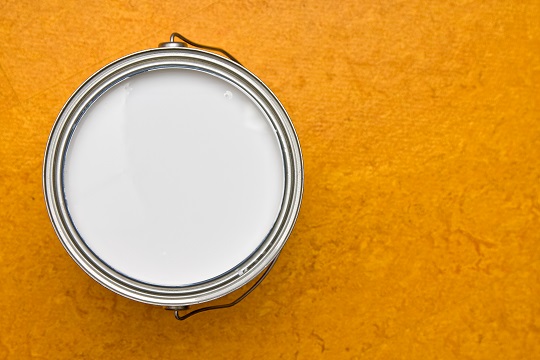Today, acrylic house paint is the preferred paint of many professional and DIY painters for exterior applications. Typically, they use regular, 100% acrylic house paint for various outdoor painting jobs. This type of paint is ideally used when temperatures are in the 50-70 degree range, but it can also be used even in colder temperatures if completely necessary. Before applying, it’s important that very shiny surfaces or those not faded by sun exposure be removed.
If the existing exterior paint is oil-based and you’re planning to switch to acrylic house paint, there are many essential considerations, which is why outdoor paint jobs are best handled by professional painters.
For instance, surfaces with mildew or chalking must be cleaned properly to remove the impurities. To do this, use a strong cleaner like TSP and mix some bleach with it. This solution will dislodge the chalk and kill the growth of mildew. Also, you must first coat any surface painted with oil-based paint with a high-quality bonding primer prior to painting it over with acrylic house paint.
Working in Cold Weather
When painting with low-temperature acrylic paints, one of the trickiest parts is watching out for drops in temperature. Acrylics must be cured (100% dried) before they are exposed to harsh conditions. Low-temperature acrylics can be applied in temperatures as low as 35-50 degrees. However, paint manufacturers indicate an acceptable temperature range for their product, and the temperature has to remain within this range for up to three hours after the paint has been applied.
Additional Tips:
– Note that other materials typically used during painting/home improvement jobs may not be suitable for cold temperatures like new acrylic house paint products. For instance, primers and fillers normally require warmer weather.
– Start the job as early as sunrise and work around your house to follow the course of sunlight. Stop working when temperatures start to go down.
– Paint dries slower in cooler temperature, so allow additional hours for drying before applying the next coat.
– When painting, make sure you’re not painting over dew so as not to trap moisture under paint, which will cause it to have blotches.
Get the Help of Professional Painters
If you require expert help with an exterior paint job this winter or at any time of the year, Seva Call can get you the help you need. Send us your service request and we’ll connect you with qualified painters in your local area in just a few minutes. Try us!





